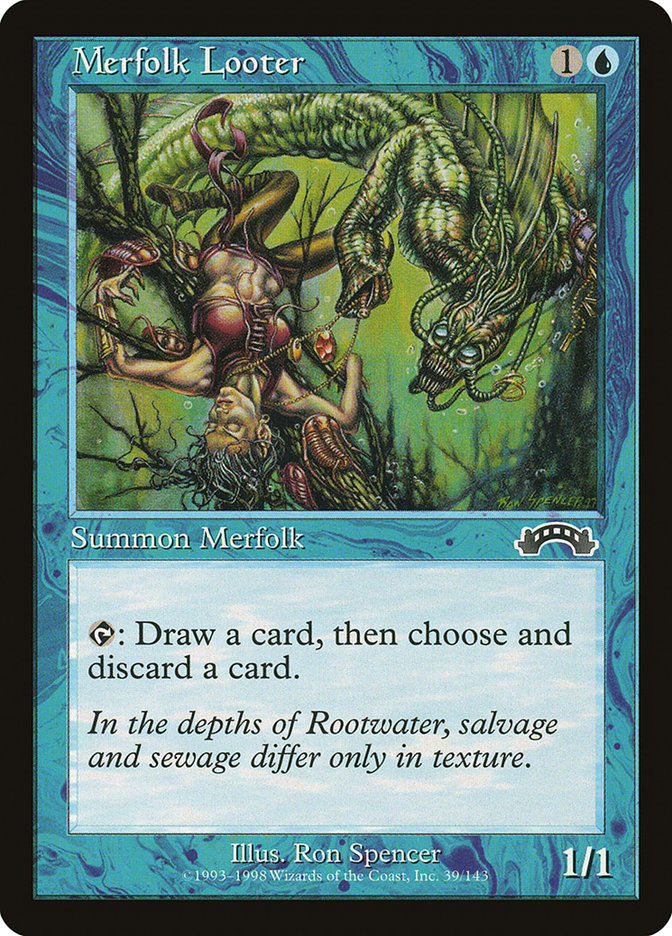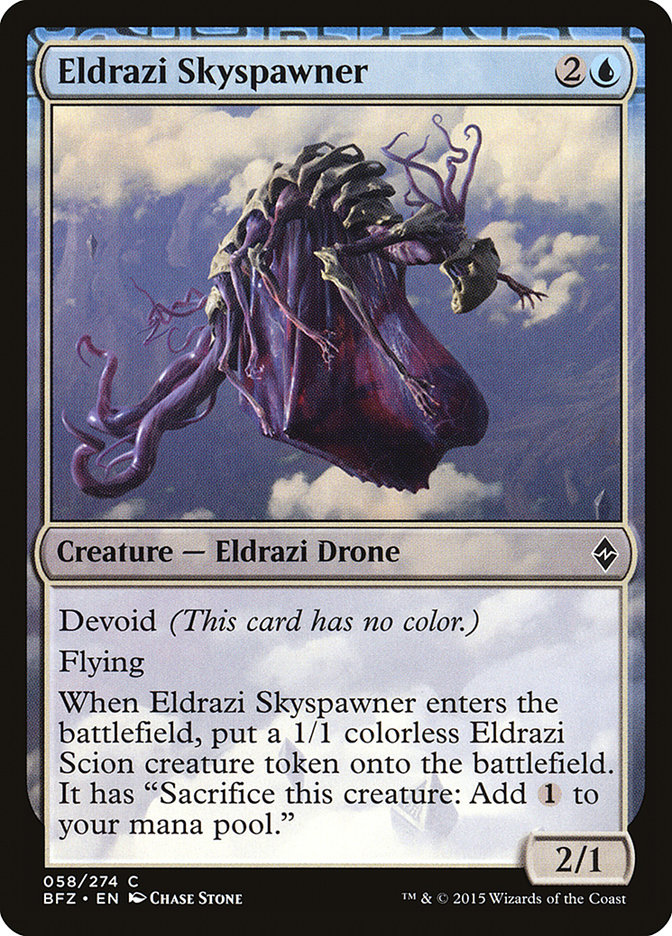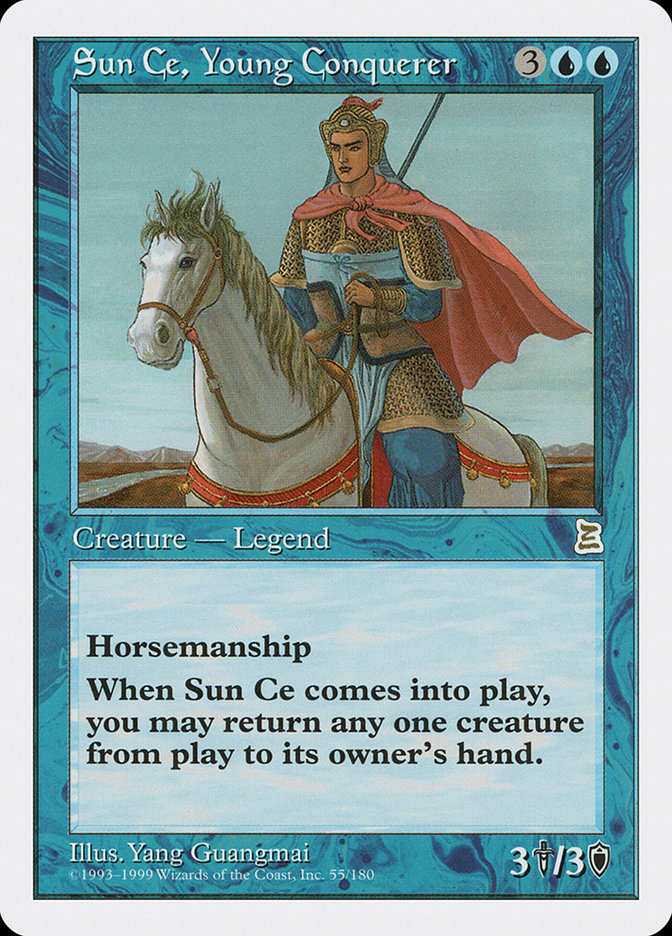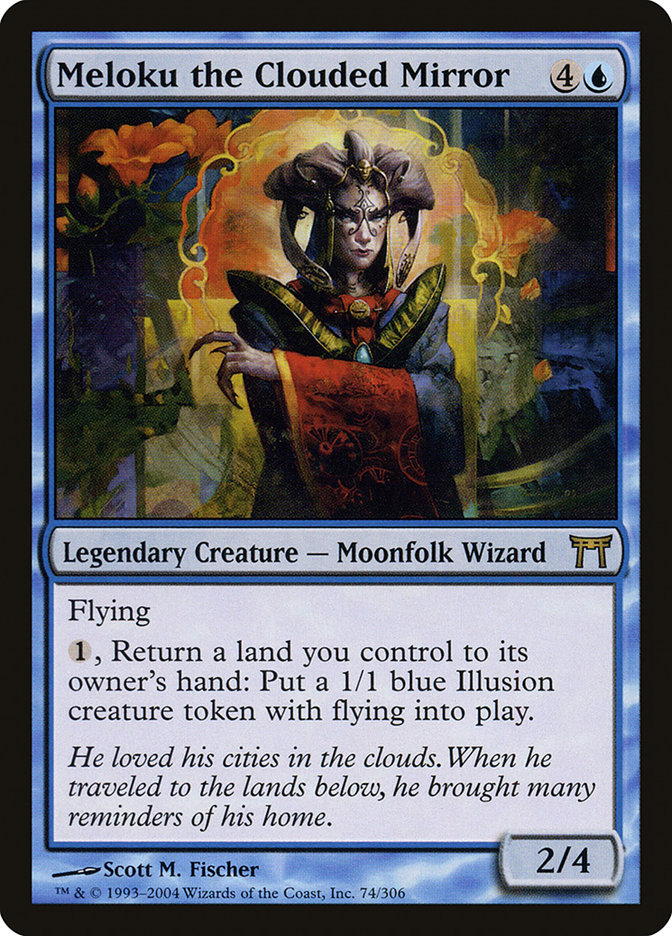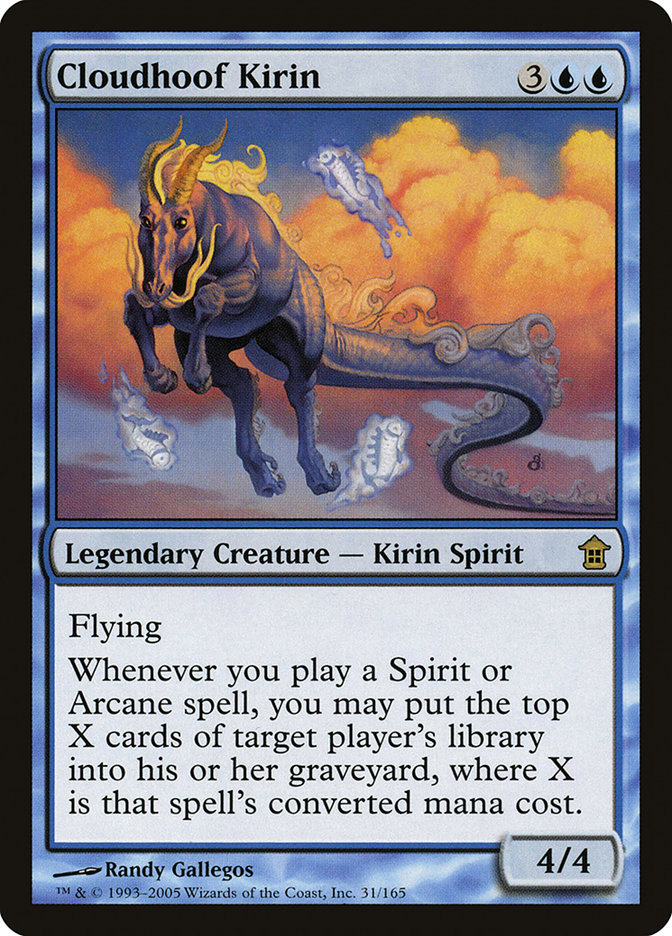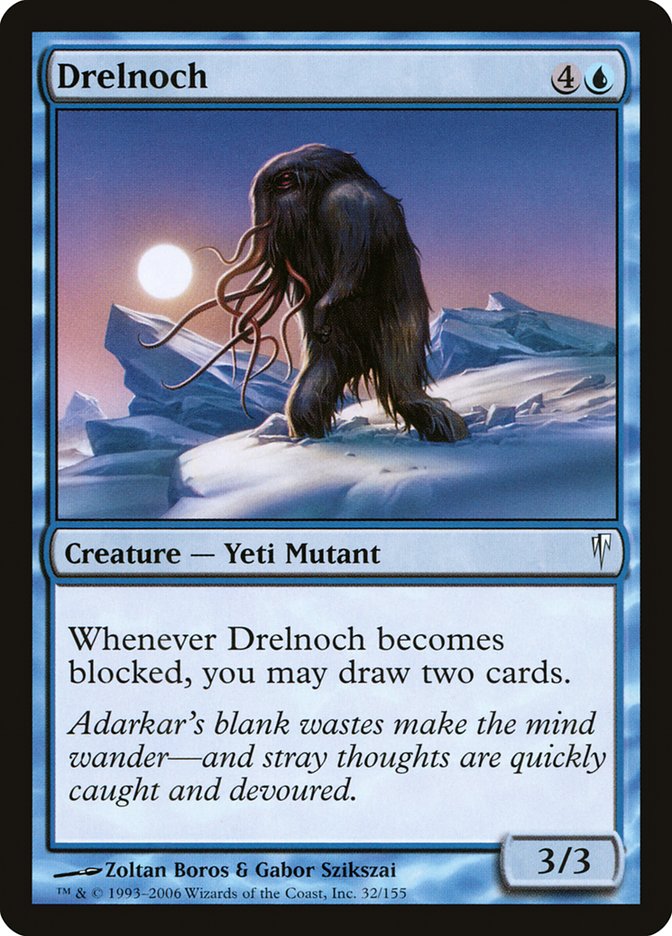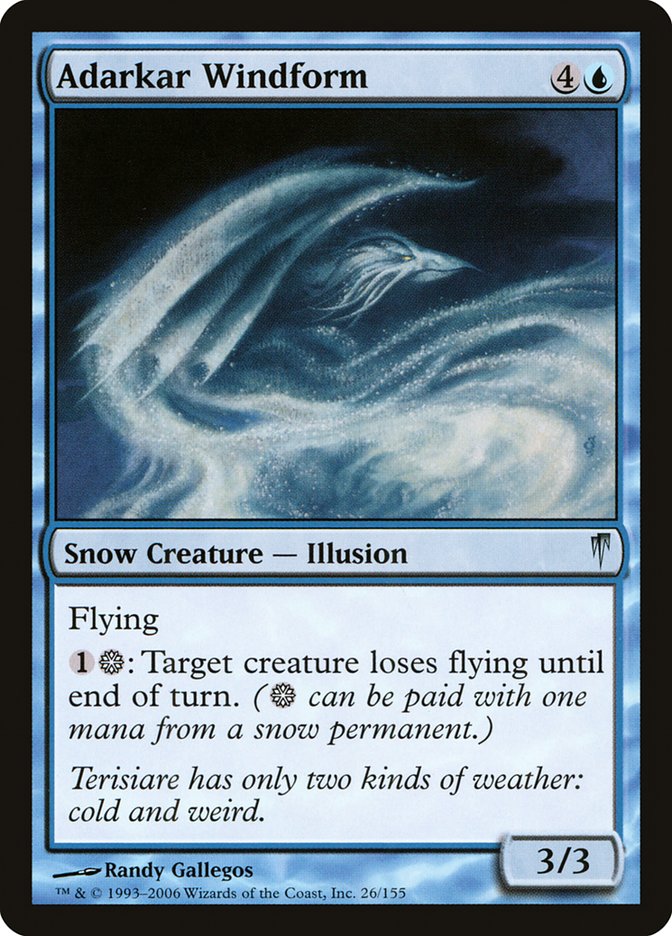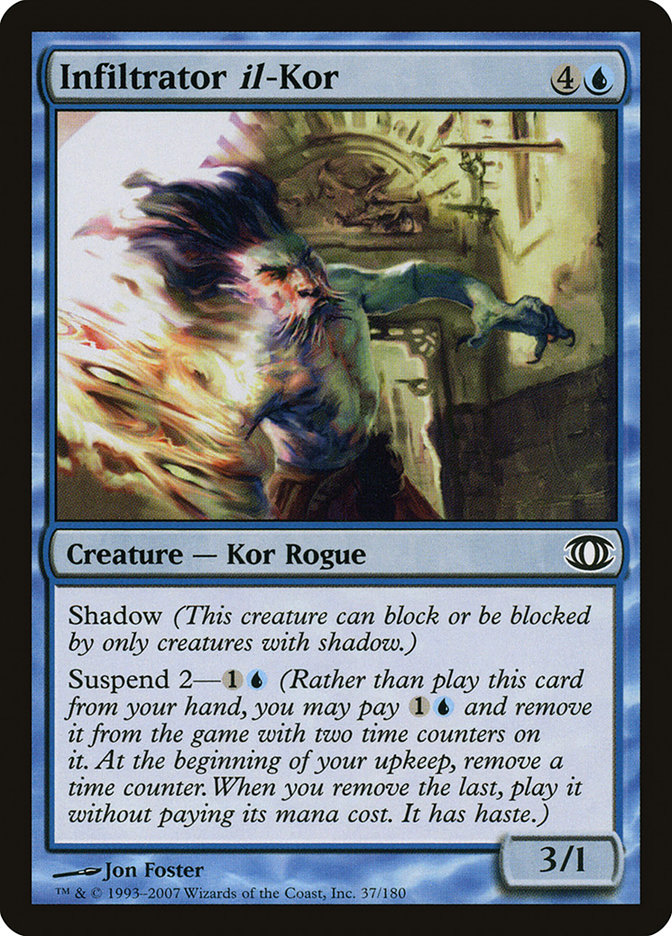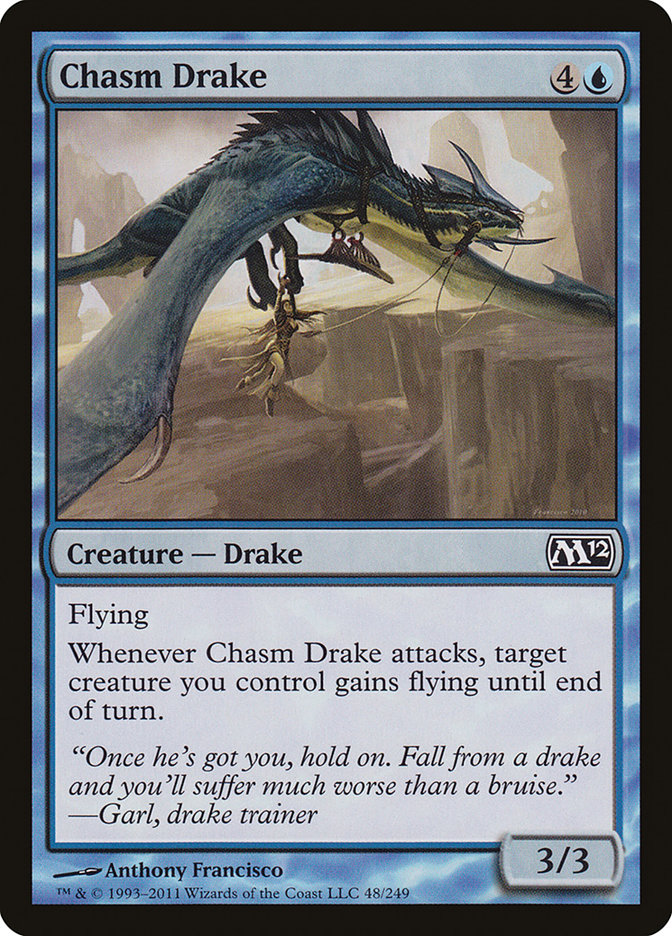Oráculo del polvo Carta MTG
| El coste de maná | |
| Costo de maná convertido | 5 |
| Rareza | Común |
| Tipo | Criatura — Metabolizador eldrazi |
| Habilidades | Devoid |
| Liberado | 2015-10-02 |
| Coleccione símbolo | |
| Coleccione nombre | Battle for Zendikar |
| Coleccione código | BFZ |
| Fuerza | 3 |
| Tenacidad | 5 |
| Número | 63 |
| Frame | 2015 |
| Disposición | Normal |
| Border | Negra |
| Ilustrado por | Jason Rainville |
Texto de la carta
Vacío. (Esta carta no tiene ningún color.){2}, poner en el cementerio de un oponente una carta del exilio de la que ese jugador es propietario: Roba una carta y luego descarta una carta.
Sea lo que sea lo que busca, nada lo detendrá hasta encontrarlo.
Cartas Similares
Oracle of Dust juega un papel único dentro del universo de Magic: The Gathering, siendo una criatura que puede proporcionar una ventaja de cartas. A menudo se le compara con otras criaturas similares como Merfolk Looter, que también es capaz de filtrar cartas de la mano de un jugador. Ambos ofrecen la capacidad de cribar el mazo, aunque Oracle of Dust requiere un exilio del cementerio para activar su habilidad de saqueo, mientras que Merfolk Looter no lo hace.
Eldrazi Skyspawner presenta otro contraparte interesante. Aunque no filtra cartas, comparte el mismo coste convertido de maná con Oracle of Dust y ofrece una presencia inmediata en el tablero al crear un token al entrar al campo de batalla. Este token puede ser crucial en términos de aceleración de maná o defensa, diferenciándose de la gratificación demorada de los robos filtrados.
Teniendo en cuenta los aspectos únicos de estas criaturas, Oracle of Dust se mantiene por sí misma al permitir el proceso de Delve y procesadores Eldrazi, lo que le da un lugar en mazos que manipulan la zona de exilio. La utilidad que proporciona en arquetipos específicos asegura que siga siendo una opción viable en la construcción de mazos de Magic: The Gathering que enfatizan estrategias de cementerio y exilio.
Cartas similares a Oráculo del polvo por color, tipo y coste de maná
Pros de la Carta
Ventaja de Cartas: Oracle of Dust ofrece una opción estructurada para recorrer tu mazo. Al utilizar su habilidad para procesar una carta del exilio, obtienes el beneficio adicional de robar otra carta, aumentando así tus opciones y reforzando tu mano cada turno.
Aceleración de Recursos: Esta criatura puede ayudar a acelerar tu plan de juego. Específicamente, se sincroniza con mazos que se centran en exiliar cartas, convirtiéndose en una herramienta poderosa para aprovechar esos recursos exiliados y convertirlos en posibles robos de cartas, lo que puede generar un flujo fluido de recursos a lo largo de la partida.
Velocidad Instantánea: Aunque Oracle of Dust en sí no es un instantáneo, su habilidad activada se puede usar a velocidad instantánea. Esto significa que puedes terminar el turno de tu oponente procesando una carta exiliada, robándote una carta en un momento que podría interrumpir sus estrategias y potencialmente negar información sobre tu nueva mano hasta que comience tu turno.
Contras de la Carta
Requisito de Descarte: Oracle of Dust exige descartar otra carta para activar su habilidad. Para jugadores que ya podrían estar luchando por mantener una mano llena, esta demanda puede agravar la escasez de recursos y llevar a una debilitación de su estrategia general.
Costo de Maná Específico: Los costos de lanzamiento y habilidad de esta criatura requieren maná incoloro, lo que dicta que tu base de maná debe adaptarse para producir este tipo. No todos los mazos pueden cumplir con tal requisito, lo que podría reducir la versatilidad de la carta entre varios arquetipos de mazos.
Costo de Maná Comparativamente Alto: Con un costo de lanzamiento de cinco manás, la inversión inicial de Oracle of Dust es alta en comparación con otras criaturas y hechizos con habilidades similares o incluso más impactantes. En juegos rápidos, su eficacia en términos de coste se cuestiona, especialmente cuando necesitas mantener el impulso contra tus oponentes.
Razones para Incluir a Oracle of Dust en tu Colección
Versatilidad: Oracle of Dust es una carta flexible adecuada para mazos que explotan el cementerio. Su capacidad para procesar cartas exiliadas proporciona utilidad en formatos donde las estrategias de exilio son prevalentes.
Potencial de Combo: Esta carta se combina bien con estrategias que exilian cartas a menudo. Al convertir esas cartas exiliadas en un motor de robos consistente, abre caminos para mazos de combo que prosperan con ventaja de cartas.
Relevancia en el Meta: En metajuegos donde cartas como Ingest o procesadores son comunes, Oracle of Dust se convierte en un activo valioso. Ayuda a mantener el flujo de cartas mientras interrumpe los planes de tu oponente, haciéndolo una adición inteligente para una colección reactiva o centrada en el control.
Cómo Vencer
Oracle of Dust es una criatura intrigante que puede presentar a los jugadores desafíos únicos. Esta carta de criatura incolora de Magic: The Gathering: La Batalla por Zendikar ofrece utilidad en forma de convertir cartas exiliadas en robos de cartas. Cuando compites contra Oracle of Dust, es esencial entender su papel en habilitar la estrategia de su dueño, a menudo en mazos que dependen del procesamiento de cartas exiliadas para obtener ventaja.
Un método efectivo para vencer a Oracle of Dust es limitar el número de cartas disponibles para que pueda procesarlas. Esto se puede lograr reduciendo la cantidad de cartas que tu estrategia exilia. También puedes considerar usar cartas de odio al cementerio que puedan eliminar objetivos apropiados del juego por completo, anulando la capacidad de Oracle of Dust. Además, dado que Oracle of Dust depende de que su controlador exile cartas, las cartas que interrumpen la zona de exilio o reemplazan el efecto con algo menos beneficioso pueden ser bastante efectivas aquí. Además, los hechizos de eliminación rápida aseguran que la criatura no permanezca en el campo de batalla el tiempo suficiente para impactar significativamente el juego.
En resumen, lidiar con Oracle of Dust implica un enfoque táctico para minimizar las interacciones de la zona de exilio y eliminar rápidamente la criatura antes de que pueda convertirse en un motor de valor sustancial para tu oponente.
Donde comprar
Si estás buscando comprar una carta MTG Oráculo del polvo de un coleccione específico como Battle for Zendikar, existen varias opciones confiables que debes considerar. Una de las fuentes principales es tu tienda de juegos local, donde a menudo puedes encontrar paquetes de refuerzo, cartas individuales y mazos preconstruidos de colecciones actuales y pasadas. A menudo ofrecen el beneficio adicional de una comunidad donde puedes intercambiar con otros jugadores.
Para un inventario más amplio, particularmente de colecciones más antiguos, mercados en línea como TCGPlayer, Card Kingdom y Card Market ofrecen amplias selecciones y te permiten buscar cartas de colecciones específicos. Las plataformas de comercio electrónico más grandes como eBay y Amazon también tienen listados de varios vendedores, lo que puede ser un buen lugar para buscar productos sellados y hallazgos raros.
Además, el sitio oficial de Magic suele tener un localizador de tiendas y listas de minoristas para encontrar Wizards of the Productos con licencia costera. Recuerde comprobar la autenticidad y el estado de las cartas al comprarlas, especialmente a vendedores individuales en mercados más grandes.
A continuación se muestra una lista de algunos sitios web de tiendas donde puede comprar las Oráculo del polvo y otras cartas MTG:
 COMPRAR
COMPRAR BurnMana es un socio oficial de TCGPlayer
- eBay
- Card Kingdom
- Card Market
- Star City Games
- CoolStuffInc
- MTG Mint Card
- Hareruya
- Troll and Toad
- ABU Games
- Card Hoarder Magic Online
- MTGO Traders Magic Online
Ver productos MTG
Legalidades
Formatos de Magic the Gathering donde Oráculo del polvo tiene restricciones
| Formato | Legalidad |
|---|---|
| Commander | Legal |
| Legacy | Legal |
| Paupercommander | Legal |
| Modern | Legal |
| Oathbreaker | Legal |
| Pauper | Legal |
| Vintage | Legal |
| Duel | Legal |
| Pioneer | Legal |
| Penny | Legal |
Reglas e información
La guía de referencia para las reglas de las cartas Oráculo del polvo de Magic: The Gathering proporciona las reglas oficiales, las erratas emitidas, así como un registro de todas las modificaciones funcionales que se han producido.
| Fecha | Texto |
|---|---|
| 25/08/2015 | Una carta con desprovisto es simplemente incolora. No es incolora y los colores del mana en su coste de mana. |
| 25/08/2015 | Cartas con el uso ausente de marcos que son variaciones del marco transparente tradicionalmente utilizado para los Eldrazi. La parte superior de la carta presenta algo de color sobre un fondo basado en la textura de los hedron que alguna vez encarcelaron a los Eldrazi. Esta coloración está destinada a ayudar en la construcción de mazos y en el juego. |
| 25/08/2015 | Devoid funciona en todas las zonas, no solo en el campo de batalla. |
| 25/08/2015 | Las cartas boca abajo en el exilio se agrupan según dos criterios: qué las exilió boca abajo y cuándo fueron exiliadas boca abajo. Si quieres poner una carta boca abajo en el exilio en el cementerio de su dueño, primero debes elegir uno de estos grupos y luego elegir una carta al azar dentro de ese grupo. Por ejemplo, supongamos que un artefacto hace que tu oponente exilie boca abajo su mano de tres cartas. Luego, en un turno posterior, ese artefacto hace que tu oponente exilie otras dos cartas boca abajo. Si utilizas a Estrangulador de Tierras Baldías para poner una de esas cartas en su cementerio, elegirías la primera o segunda pila y pondrías una carta elegida al azar de esa pila en el cementerio. |
| 25/08/2015 | Si una carta pierde la cualidad de Desprovisto, seguirá siendo incolora. Esto se debe a que los efectos que cambian el color de un objeto (como el creado por Desprovisto) se consideran antes de que el objeto pierda la cualidad de Desprovisto. |
| 25/08/2015 | Si un efecto de reemplazo hace que las cartas que se pondrían en un cementerio desde cualquier lugar sean exiliadas en su lugar (como el creado por Anafenza, la Primera), aún puedes poner una carta exiliada en el cementerio de su oponente. La carta se convierte en un nuevo objeto y permanece exiliada. En esta situación, no puedes usar una única carta exiliada si se requiere poner más de una carta exiliada en el cementerio. Por otro lado, podrías usar la misma carta en esta situación si dos hechizos o habilidades separados requirieran que pusieras una única carta exiliada en el cementerio de su dueño. |
| 25/08/2015 | Si un hechizo o habilidad requiere que pongas más de una carta desterrada en el cementerio, puedes elegir cartas propiedad de diferentes oponentes. Cada carta elegida se pondrá en el cementerio de su dueño. |
| 25/08/2015 | Otras cartas y habilidades pueden otorgar a una carta el color carecido de color. Si eso sucede, el nuevo color es simplemente ese, no ese color y sin color. |
| 25/08/2015 | No puedes mirar las cartas boca abajo en el exilio a menos que un efecto te lo permita. |

